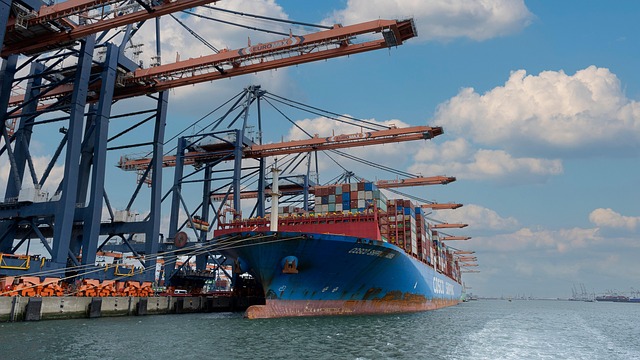Stackable ISO shipping containers streamline global trade by simplifying intermodal transfers and enhancing transport efficiency. Their versatile designs, from standard to specialized, facilitate seamless movement between sea, rail, and road. Container leasing services offer flexible solutions. This system reduces handling times, costs, and damage, optimizes space, enhances security, and speeds up deliveries, benefiting businesses with time-sensitive freight and e-commerce operations. Efficient handling, standardized procedures, maintenance, labeling, and digital tracking ensure safe, speedy transfers for diverse container types.
Stackable shipping containers are revolutionizing intermodal transport, streamlining processes and optimizing logistics. This efficient system allows for streamlined movement between modes—train, truck, and ship—by facilitating faster, safer, and more compact stacking. In this article, we explore the pivotal role of stackable containers in modern supply chains, highlighting their advantages, best practices for handling, and the significant improvements they bring to global trade, particularly in terms of shipping container management.
- Understanding Stackable Containers' Role in Logistics
- Advantages of Streamlined Intermodal Transfer
- Best Practices for Efficient Container Handling
Understanding Stackable Containers' Role in Logistics

Stackable shipping containers play a pivotal role in modern logistics, streamlining intermodal transfer processes and revolutionizing global trade. By facilitating seamless movement between different transport modes—from sea to rail to road—these versatile freight containers ensure efficient container shipping across vast distances. Their robust design and standardized dimensions, typically adhering to ISO standards, enable easy stacking, secure lashing, and optimized storage both in transit and at container depots.
This modularity not only saves valuable time and space during loading and unloading but also enhances overall transportation efficiency. Whether it’s a standard 20-foot or 40-foot sea container, specialized options like refrigerated containers, flat rack containers, or high cube containers, each serves a unique purpose in the supply chain. Container leasing and rental services further add to their utility, providing flexible solutions for businesses with fluctuating shipping needs, contributing significantly to the global economy’s agility and resilience.
Advantages of Streamlined Intermodal Transfer

The advantages of streamlined intermodal transfer processes using stackable shipping containers are numerous and far-reaching. By adopting this efficient system, businesses can significantly enhance their logistics operations, leading to cost savings and improved productivity. One of the key benefits is the reduction in handling time and costs associated with traditional container transfer methods. With stackable containers, cargo can be easily transferred between modes of transport—such as ship, rail, and truck—without the need for manual unloading and reloading, thus minimizing labor requirements and potential damage to goods.
Furthermore, these versatile shipping containers offer a high level of flexibility in terms of container dimensions and capacities, catering to diverse cargo needs. From standard ISO containers to specialized types like refrigerated, flat rack, or open top containers, this modular approach ensures efficient utilization of space and optimized cargo security. Streamlined intermodal transfer also facilitates quicker turnaround times at ports and container depots, enabling faster delivery of goods worldwide, which is particularly advantageous for time-sensitive freight and e-commerce operations.
Best Practices for Efficient Container Handling

Efficient handling of shipping containers is paramount to streamline intermodal transfer processes and optimize logistics operations. Best practices include implementing standardized procedures for loading, unloading, and stacking containers to ensure safety and speed. Utilizing proper equipment such as forklifts and cranes with specialized attachments optimizes movement, reducing manual labor and potential damage. Regular maintenance checks on container conditions, including inspecting for wear and tear, water damage, or corrosion, are crucial to maintain structural integrity.
Additionally, proper labeling and documentation are essential. Clear, accurate markings on containers aid in quick identification during transport and transfer between modes. Digital tracking systems can be integrated to monitor container movement in real-time, enhancing visibility and enabling proactive decision-making. Leveraging these best practices not only enhances operational efficiency but also contributes to the overall reliability of container shipping, particularly when managing diverse types like sea containers, refrigerated containers, or flat rack containers within a single depot.
Stackable shipping containers have revolutionized intermodal transfer processes, offering significant advantages over traditional methods. By understanding their role and implementing best practices, logistics professionals can streamline operations, reduce costs, and enhance efficiency. The benefits of these innovative containers are undeniable, making them a game-changer in the industry. As we look to the future, adopting stackable shipping containers will continue to be crucial for navigating complex global supply chains effectively.
